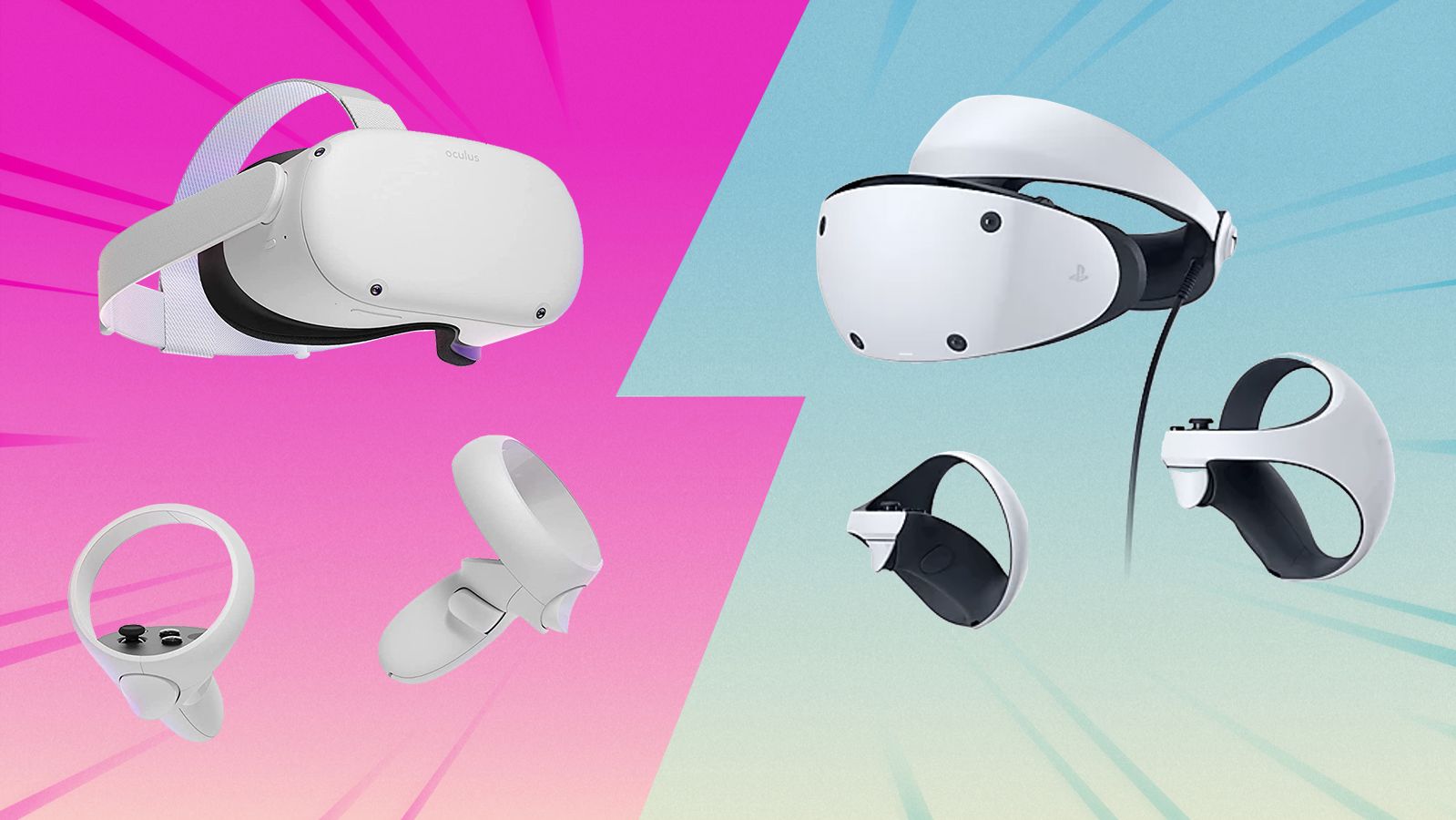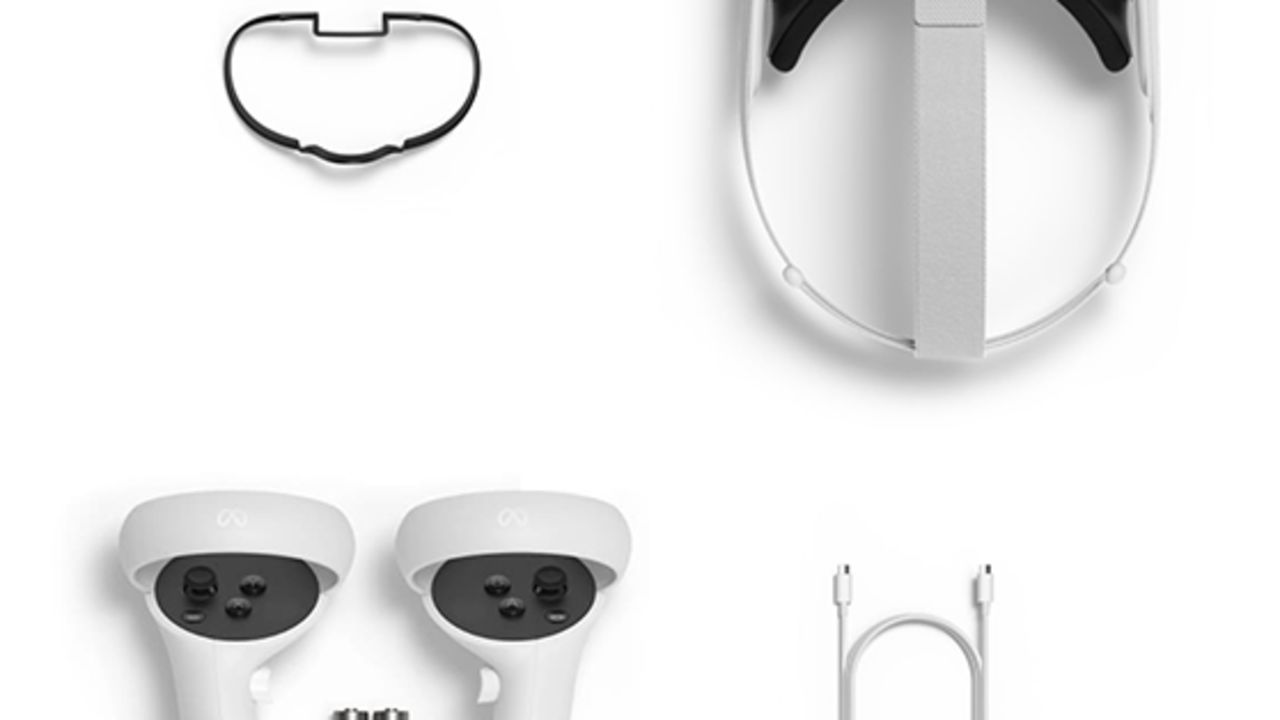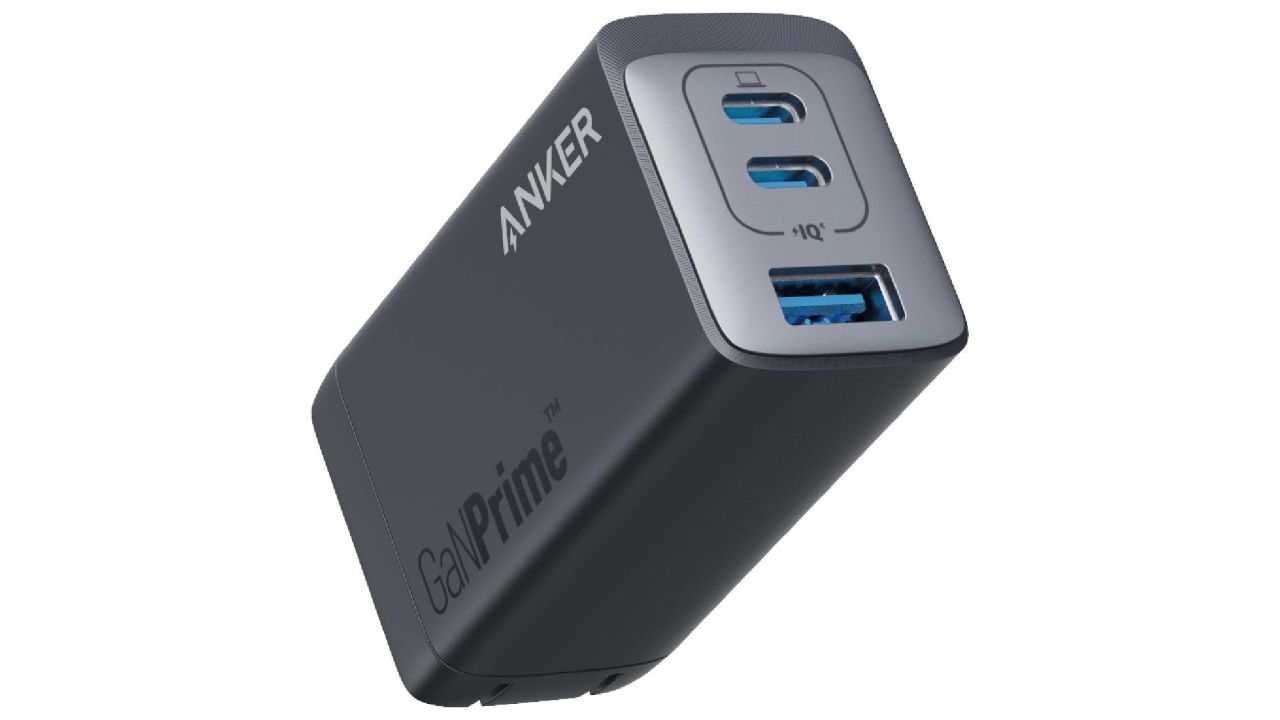This article is part of our series?Battle of the Brands, in which we compare category-leading products to their counterparts to determine which are actually worth your money.
The Meta Quest 2 has been our clear winner for best VR headset, thanks to its intelligent stand-alone design and impressive library of games. However, Sony’s PlayStation VR 2 has become the new kid on the block with a handful of technologically advanced features and significant improvements over its aging predecessor.
While both are the biggest household names in the space, there are a lot of important differences people need to know about before picking one. Those headset hardware distinctions will allow potential buyers to set up realistic expectations for their VR experience. For those looking to make a decision between the Meta Quest 2 and PSVR 2, here are some things to consider.
Meta Quest 2 vs. PlayStation VR 2 at a glance
| What we loved | Smart and simple design that’s easy to set up, intuitive controllers and an incredible library of games |
Great design and smooth setup, solid game library, useful cinematic mode |
|---|---|---|
| What we didn't like | Short battery life, price has gone up since launch |
More expensive than original PSVR, lack of backwards compatibility, low battery life on controllers |
| Resolution | 1832 x 1920 per eye |
2000 x 2040 per eye |
| Refresh rate | Up to 120Hz |
Up to 120Hz |
| Wireless | Yes |
No |
| Required system | None (optional PC compatibility) |
PlayStation 5 |
| Price | $400 | $550 |
Fully stand-alone, or console-based?
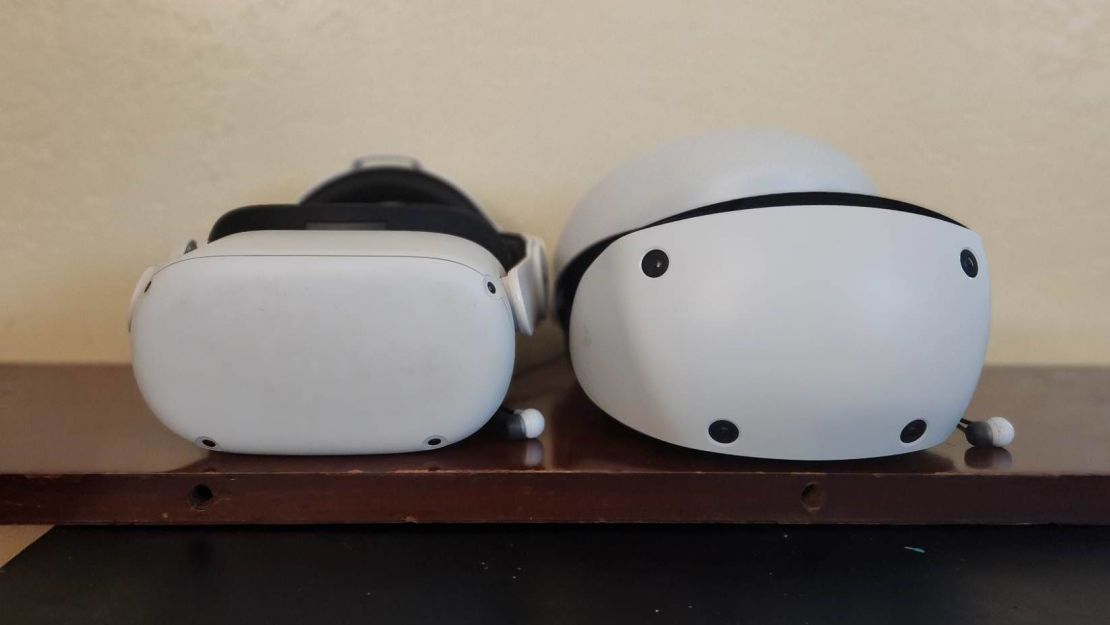
Regardless of which headset you use, setting up both the Meta Quest 2 and PSVR 2 is relatively simple. The main difference between the two comes down to whether you want a fully stand-alone headset or you don’t mind being tethered to your console. Thankfully, the PSVR 2 makes this process much simpler than its predecessor — all you have to do is plug the headset into the PS5’s front USB-C port, and you’re good to go. The Meta Quest 2 works completely on its own, though you can connect it to your gaming PC (either wirelessly or with a Quest Link cable) to experience the many PC-exclusive VR games out there. On the software side, both headsets are easy to set up as well, from creating your virtual wall boundaries to syncing your controllers.
TL;DR: The Meta Quest 2 and PSVR 2 offer simplified setups to get the devices up and running. When it comes to pure usability out of the box, the Meta Quest 2 doesn’t require anything except the included controllers. Meanwhile, the PlayStation VR 2 needs a $400 to $500 PS5 to operate. Individuals who just want a pick-up-and-play VR experience that can be easily taken anywhere are better off with the Meta Quest 2.
The PlayStation VR 2 has superior controllers
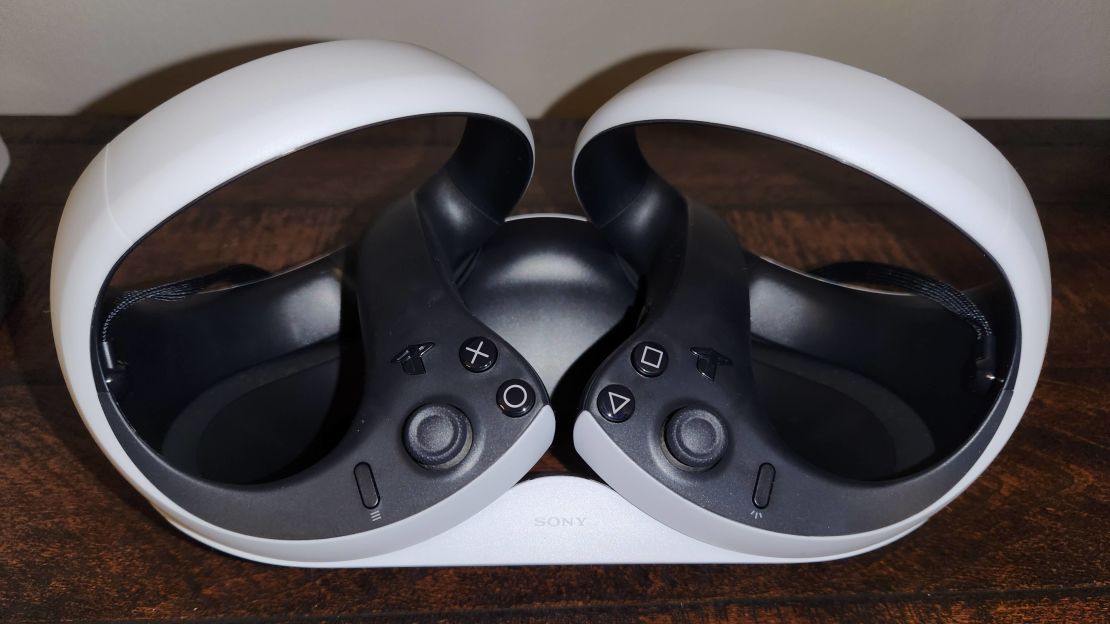
The PSVR2 replaces the PSVR Move controllers with Sony’s new Sense controllers. On the surface level, they look similar to the Meta Quest 2’s Touch controllers. Both input devices have analogue sticks, face buttons, trigger buttons and home buttons. Clearly inspired by the PS5’s DualSense controller, the main trigger has haptic feedback alongside a share button to instantly create screenshots or videos of various lengths. These go a long way toward making games feel more immersive.
Those features also put the battery life around three hours on average, though the internal batteries are rechargeable. Meanwhile, the more traditional Touch controller may lack those extra features, but the battery life is higher from just one AA battery, and can last for weeks of continuous play before you have to replace them. And thanks to a recent hand-tracking update, the Meta Quest 2 allows users to control the home screen, settings and some games without needing controllers at all.
TL;DR: Everything about the PSVR 2 Sense controllers feels like a natural evolution of VR input design. Despite a lower battery life, the haptic feedback on the triggers and rechargeable battery makes it significantly better than the more vanilla Touch controllers. Both are more than enough for a variety of VR play styles, but the PSVR 2 Sense controllers go the extra mile toward creating more immersive experiences.
2 strong game libraries, but Meta’s is bigger

So far, the PlayStation VR 2 offers a respectable lineup of diverse titles ranging from blockbusters like Horizon Call of The Mountain to unique experiences like Kayak VR: Mirage. PS5 games like Gran Turismo 7 and Resident Evil Village also have VR modes. Taking things even further, the PSVR 2’s cinematic mode allows users to play standard PS5 games on a simulated big screen. Unfortunately, the PSVR 2 isn’t backwards compatible with original PSVR games, though some titles can be upgraded to their new version for free — or a small upgrade fee.
However, in terms of sheer volume of games, the Meta Quest 2 is simply unbeatable at the moment. The stand-alone headset has more than a few hundred games available alongside that stretch out to a wider range of genres including fitness-based titles like Supernatural and intense battle royales like Population:One. You can also hook it up to your gaming PC to gain access to the many VR games on the Oculus app and Steam, which can double the number of available games.
TL;DR: The Meta Quest 2 has a remarkably larger library that gets even bigger if you connect it to a gaming PC. And if you end up upgrading to a Meta Quest Pro, you can still play games within your existing library.
PlayStation VR 2 wins on sheer performance, thanks to the PS5
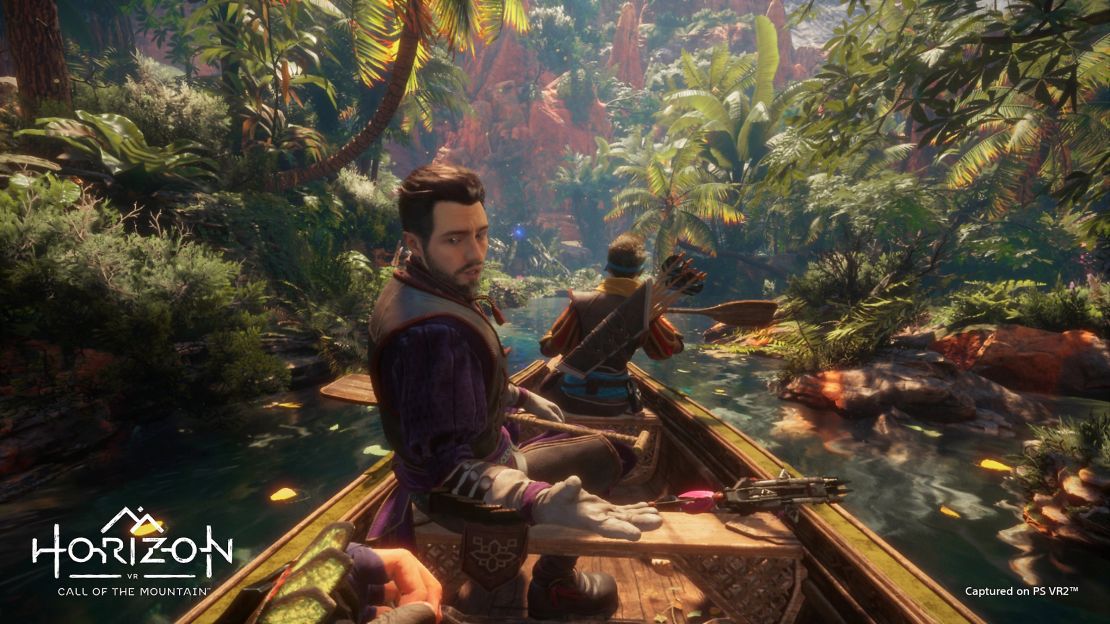
The Meta Quest 2 packs a Qualcomm Snapdragon XR2 mobile processor, which enables a resolution of 1832 x 1920 per eye and a smooth 120Hz refresh rate. Those specs are still impressive for a stand-alone headset two years later, even if the Quest 2 lacks the performance power of tethered headsets like the PSVR 2 or Valve Index. Games like Resident Evil 4, Medal of Honor: Above and Beyond, Stormland and Lone Echo look beautiful on the Meta Quest 2 while maintaining high frame rates.
Obviously, the PSVR 2 is the most powerful of the two due to the headset requiring a PS5. This grants the device the full power of the console’s next-gen AMD graphics, generous 16GB of memory and fast-loading SSD. The headset’s 2000 x 2040 per eye resolution makes titles like Horizon Call of The Mountain or Kayak VR: Mirage even more visually spectacular. Placing the same ports of games side by side against the Meta Quest 2, the PSVR 2 versions look and play noticeably better.
TL;DR: On its own merit, the Meta Quest 2 offers some great-looking games. But tethered VR headsets are hard to top on performance, and the already impressive PSVR 2 is pushed to its limits, thanks to the PS5. Sony’s new headset at this moment is nearly on par with what high-end gaming PCs offer.
The Meta Quest 2 is more versatile
Since its launch in 2020, the Meta Quest 2 has improved in many ways through software updates and new features. The biggest change came last year when Meta stopped requiring a Facebook account to use the headset. Other features include everything from the aforementioned hand tracking to Horizon Worlds, which is a social hub where players can hang out. The headset’s Quest Link functionality doesn’t just let you play PC-based VR games — it also provides access to a virtual desktop to let you work in virtual reality. There are dozens of productivity apps on the Meta Quest 2, including monday.com and Workrooms.
The PlayStation VR 2’s key features include eye tracking alongside rumble motors in the headset itself. Cinematic mode is back from its original PSVR iteration, which allows users to play standard games or watch video content in a simulated theater. This time around, improvements include a higher 1080p resolution and HDR compatibility. There’s no better feeling than lying on the couch playing The Last of Us Part 1 on a huge simulated screen.
TL;DR: When it comes to the overall feature set, the Meta Quest 2 edges out the PSVR 2, thanks to its two-year head start. It’s versatile enough for work and play, and is easier to use than ever now that a Facebook account is no longer required.
The Meta Quest 2 is the better value
When the Meta Quest 2 launched in 2020, it started at an affordable $299 with 128GB of storage and $399 for 256GB. Both versions saw a $100 increase last year to $399 and $499, respectively, which is a bit perplexing considering hardware usually doesn’t cost more over time. Regardless, people are still buying Meta’s flagship headset in droves.
The PSVR 2 is an even tougher sell when it comes to price of entry. Sony’s new VR headset has an introductory price of $550 on top of the $400 to $500 it costs to get a PS5. This means to use a PSVR 2, you’ll be paying upward of $1,000 for all of your hardware (granted, you’ll also have a PS5). That doesn’t even count the price of games. PSVR 2 games range between $25 and $60, while Meta Quest 2 games generally go for a cheaper $10 to $40.
TL;DR: Between the cost of the hardware and software, the Meta Quest 2 is the better overall value. If you already own a PS5, however, the PSVR 2 is a good investment that will likely pay off as more games get released.
Bottom line
There are legitimate reasons to love both the Meta Quest 2 and PlayStation VR 2. One is a versatile stand-alone headset with a large library of games and apps. The other is a tethered headset that requires a PS5 and delivers more graphically immersive games — and it hasn’t even reached its full potential yet.
The right one depends on exactly what kind of VR experience you’re looking for.
? If you want an affordable VR headset that works out of the box, get the Meta Quest 2.
? If you have a PS5 and you’re looking to take your console to new heights — and have $550 dollars to spare — get the PSVR 2.
